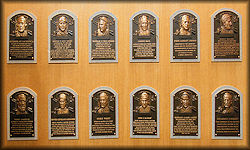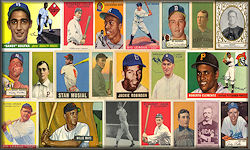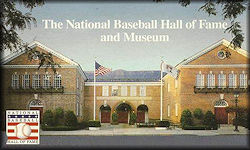“Baseball must always keep pace with the times,” Warren Giles said upon retiring after 18 years as National League president.
Although he respected tradition, Giles refused to be bound by old practices. Leading the NL from 1952 to 1969, Giles oversaw one of the most significant and dynamic eras in league history.
Giles’ path to the elite ranks in baseball began as an owner of a small football team in Moline, Ill. In November 1919, Giles was asked by Moline’s community leaders to take over the town’s struggling Triple-I League baseball team. Though he already had a job as a painter, Giles agreed to run the club for no pay.
Giles hired the son of Hall of Fame manager Connie Mack, Earle, to manage the team, saying: “I had long been an admirer of old Connie, so I thought I couldn’t go wrong by engaging his son.” Together, Giles and Mack led Moline from worst to first in the span of two seasons.
Over the next few years, Giles ran a minor league team in St. Joseph, Mo., and worked as a college football referee until a call from Hall of Fame executive Branch Rickey changed his life. In 1925, Rickey hired Giles as general manager of the Double-A Syracuse Stars, where he would serve for two years before being promoted to run the Triple-A Rochester Red Wings.
Giles helped develop several star players in Rochester that would go on to excel for Rickey's “Gashouse Gang” St. Louis Cardinals, including Ripper Collins and Pepper Martin. Meanwhile, Giles’ acumen as a front-office leader continued to grow; by 1936, he was acting president of the International League.
At the conclusion of the 1936 season, Giles received his call to the big leagues when he was tapped to replace Hall of Fame executive Larry MacPhail as the Cincinnati Reds’ general manager. “I met [Reds owner] Powel Crosley at an All-Star Game in 1935,” Giles later recalled. “He was familiar, of course, with our winning record at Rochester. We seemed to hit it off immediately, and the following year, when he was looking for a successor to Larry MacPhail, he thought of me.”
Though he inherited a team that would finish last in 1937, Giles immediately set to work in turning the Reds’ fortunes around. In 1938, Giles hired future Hall of Fame manager Bill McKechnie and acquired future All-Stars Lonny Frey and Bucky Walters via trade. Cincinnati won 82 games that season, and the Sporting News named Giles its Executive of the Year.
In 1939, Walters won the National League Most Valuable Player Award and combined with Paul Derringer to form the league’s most dominant pitching tandem. Led by their star hurlers, the Reds won the 1939 pennant and followed up with a World Series championship in 1940 – the franchise’s first in 21 years.
Giles remained with the Reds for another 11 seasons, eventually becoming team president in 1947. Four years later, Giles was in contention along with National League President Ford Frick to succeed Happy Chandler as commissioner of baseball. When a stalemate arose in the owners’ vote, Giles stepped aside in favor of Frick.
“My first interest in baseball is the welfare of baseball itself,” Giles told his fellow owners.
As Frick assumed the commissioner’s office, Giles replaced him as NL president. With Giles in charge, the Senior Circuit enjoyed a prolonged period of success – thanks in large part to its president’s progressive policies. The NL admitted more top-flight African-American players than its counterpart American League during the 1950s and soon realized an obvious advantage in talent. During Giles’ reign from 1951-69, the NL won 16 of 23 All-Star Games and 10 of the 19 World Series.
Giles also oversaw an unprecedented period of relocating and expansion of National League teams during his tenure. He facilitated two separate moves of the Braves (from Boston to Milwaukee in 1953, then later to Atlanta in 1966), as well as the migration of both the Dodgers and the Giants to California in 1957. In 1962, Giles’ National League invited expansion teams in Queens (the Mets) and Texas (the Colt .45s), further expanding Major League Baseball’s influence in every corner of America.
Giles’ final year in office, 1969, saw his league cross the border into Canada with the founding of the Montreal Expos. That season, Giles also approved the creation of divisional play and the first National League Championship Series.
“Warren Giles has done a magnificent job of building up the National League,” said Charlie “Chub” Feeney, who succeeded Giles as NL president. “I will be well satisfied if I can do two-thirds as good a job in my tenure. The National League is having its high point of the cycle.”
Giles announced his retirement at age 73 in December 1969. He passed away on Feb. 7, 1979, and was inducted into the Hall of Fame that same year. (Ref: National Baseball Hall of Fame) |





